Panasonic Flashxpress Digital Small Toaster Oven In-depth Review

Overall Verdict
The Panasonic NB-G110P FlashXpress Digital Small Toaster Oven stands out to us by having powerful heating elements despite its low power draw of 1300 W. Not only does having powerful heating elements reduce cooking times, but having a low power draw also decreases energy consumption. These features made the oven suitable for people who want a small unit that can deliver good cooking performances while saving energy.
Our performance tests made the oven’s weakness of uneven heat distribution apparent. However, we think this could be improved by reducing the portion size compared to our test amount.
The oven has unique design features, including an auto-pull rack and preset cooking functions. Unfortunately, while the auto-pull rack was a convenient feature, it effectively reduced the available cooking space.
Moreover, the cooking presets didn’t actually add much to the oven’s ease of use. Overall, the oven lacked the premium features often seen in competitively-priced units.
Things We Like
- Energy-efficient quartz and ceramic heating elements
- High-contrast digital display
- Internal lighting available
- Sturdy construction
- Easy-to-clean stainless steel exterior
- Cool-touch door handle
- Convenient slide-out crumb tray
Things We Don’t Like
- No safety mechanism for the door
- Having only one tray level
- Not particularly budget-friendly
The silver stainless steel Panasonic NB-G110P FlashXpress Digital Small Toaster Oven has a unique design. Besides the preset cooking functions which are common for Japanese kitchen gadgets, this oven has a distinct auto-pull rack. However, one may wonder if this oven is really worth its price, especially compared to our best small toaster ovens.
6.6 Performance: Short Cooking Times
The Panasonic NB-G110P has very powerful heating elements so it could reduce the cooking time. However, the oven had a shortcoming that kept it from being a top contender: uneven heat distribution. Nonetheless, it was able to bake pizzas and roast a whole chicken well.
6.0 Toast

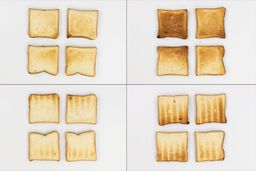
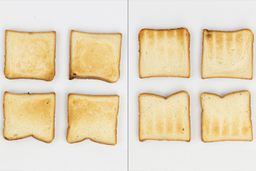
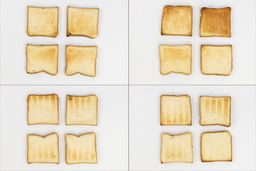
There were a few interesting things, though not necessarily good, about our Toast test for the NB-G110P. We first tried the middle toasting level—level 3—and the results were all burnt. Then, we decreased the setting to level 2 and the toast was no longer burnt. However, it was still dark for our standard.
Finally, we cranked it down all the way to level 1—around 2 minutes 20 seconds on the timer. This setting allowed us to achieve an acceptable outcome scoring a 6.1/10 in total. Of course, this meant that we only had a reference for the darker setting and not the lighter one.
On the toasting level 1, the four pieces of toast had a nice golden brown color around the center of the oven. However, the color got significantly lighter as it got to the edges. This unevenness was all the more apparent on the bottom side of the toast, so we gave it a 7/10 for even surface color.
Unfortunately, such a short cooking time wasn’t able to crisp up the toast, even the golden brown areas. Our head chef Tuyet Pham deemed the toast, at best, passable to go with sandwiches, omelets, and eggs benedict and awarded it a 6/10 for taste.
All the existing problems of the first batch became slightly worse in the second batch. The cooking time for the second batch at toasting level 1 was automatically adjusted to be slightly shorter—2 minutes 11 seconds.
For some reason, the color was less even on top—one piece of toast was only lightly toasted, one was golden, one was golden brown, and one was brown. Nonetheless, the bottom of the second batch was similar to the first.
While the golden brown and brown pieces were a bit crispier than the first four, they weren’t enough to get the consecutive usability score to higher than 5.5/10.
7.3 Pizza
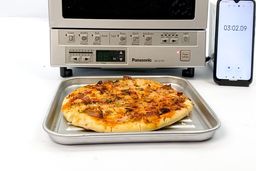
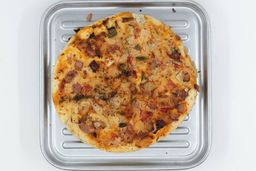

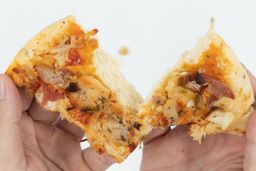
Through our Pizza test, we noticed that the heating elements of the Panasonic NB-G110P seem to be very powerful. However, it wasn’t coupled with even heat distribution, which resulted in a 7.4/10 pizza score.
The toaster oven was able to bake a 9-inch thick-crust meat pizza in only 3 minutes. This was one of our fastest recorded cooking times, even faster than the powerful medium-sized Cuisinart TOA-60, and deserving a whopping 10/10.
However, such a short cooking time was only enough to cook the crust while not giving it any color at all. The silver lining in this was that the crust wasn’t dry, enough for a 6.5/10.
The toppings would have been quite appetizing if not for the burnt onions, bell peppers, and meat tips. Luckily, the high heat meant that the cheese was melty which garnered the toppings a 7.5/10.
Unfortunately, the burnt parts affected the taste quite badly with their bitterness. Thus, our chef could only give the pizza a 6/10 after tasting it.
7.1 Whole Roasted Chicken

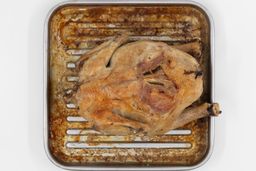
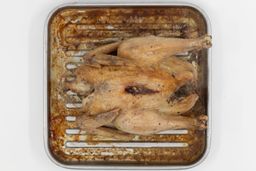
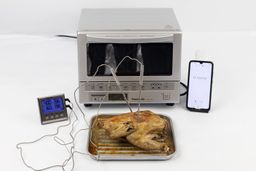


As we tried to fit a 3-pound whole chicken inside the Panasonic for our Whole Roasted Chicken test, the chicken grazed the hot upper heating element. This resulted in quite an impressive caramelization on the skin but also permanent stains on the heating element.
The lack of space for heat circulation was one of the main reasons behind the subpar score of 7.1/10. If you were to roast a chicken in this oven, we recommend cutting open the chicken or chopping it into pieces beforehand.
The Panasonic took 1 hour 10 minutes to roast the chicken, compared to the standard one hour, so it got a 7/10. We decided to stop the cooking at this point because our chef suggested that the skin wasn’t getting any more color and we didn’t want to overcook the chicken.
While the skin close to the upper heating element was nicely caramelized, the rest of it lacked color. It was also really soft, similar to being steamed, so we gave it a 6/10.
Checking with a meat thermometer, we found the chicken’s internal temperature to be 196°F-198°F which was quite high compared to the USDA’s recommended 165°F-180°F. Of course, the meat had no pink spots, so we gave it an 8.3/10.
As a result of the long cooking time, the meat was a bit dry. Interestingly, the soft skin was able to make up for the dry meat, enough for a 7/10 for taste from our chef.
6.1 Baked French Fries
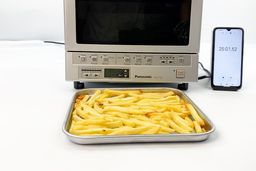

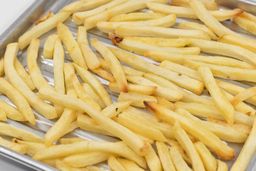

The problem of powerful heating elements and uneven heat distribution in baking pizza repeated here in our Baked French Fries test. However, the score for the Panasonic’s baked french fries was lower, at 6.1/10.
We tried to give the oven the benefit of the doubt and stop the cooking at 25 minutes. This was the time limit of our test and equaled a 5/10. We decided to stop the cooking so as to not decrease the cooking time score any further despite the fries’ lack of color.
Even after baking for 25 minutes, only the smaller fries had a light golden color. The bigger and longer ones were only golden at the tips while the rest of them was basically white. Thus, we gave the fries a 6/10 for color.
The smaller fries had a bit of crispiness to them while the bigger and longer ones were just plain soft. Nonetheless, they weren’t dry, so we could still give them a 6.5/10 for texture.
With such subpar colors and textures, our chef could only give the fries a 6.5/10 for taste.
6.0 Design: High Build Quality Only
The Panasonic NB-G110P has a high build quality which justifies its price. However, it has no noticeable additional design features compared to other less expensive small toaster ovens—including the Mueller MT-175—besides an interior light and an auto-pull rack.
In the Box
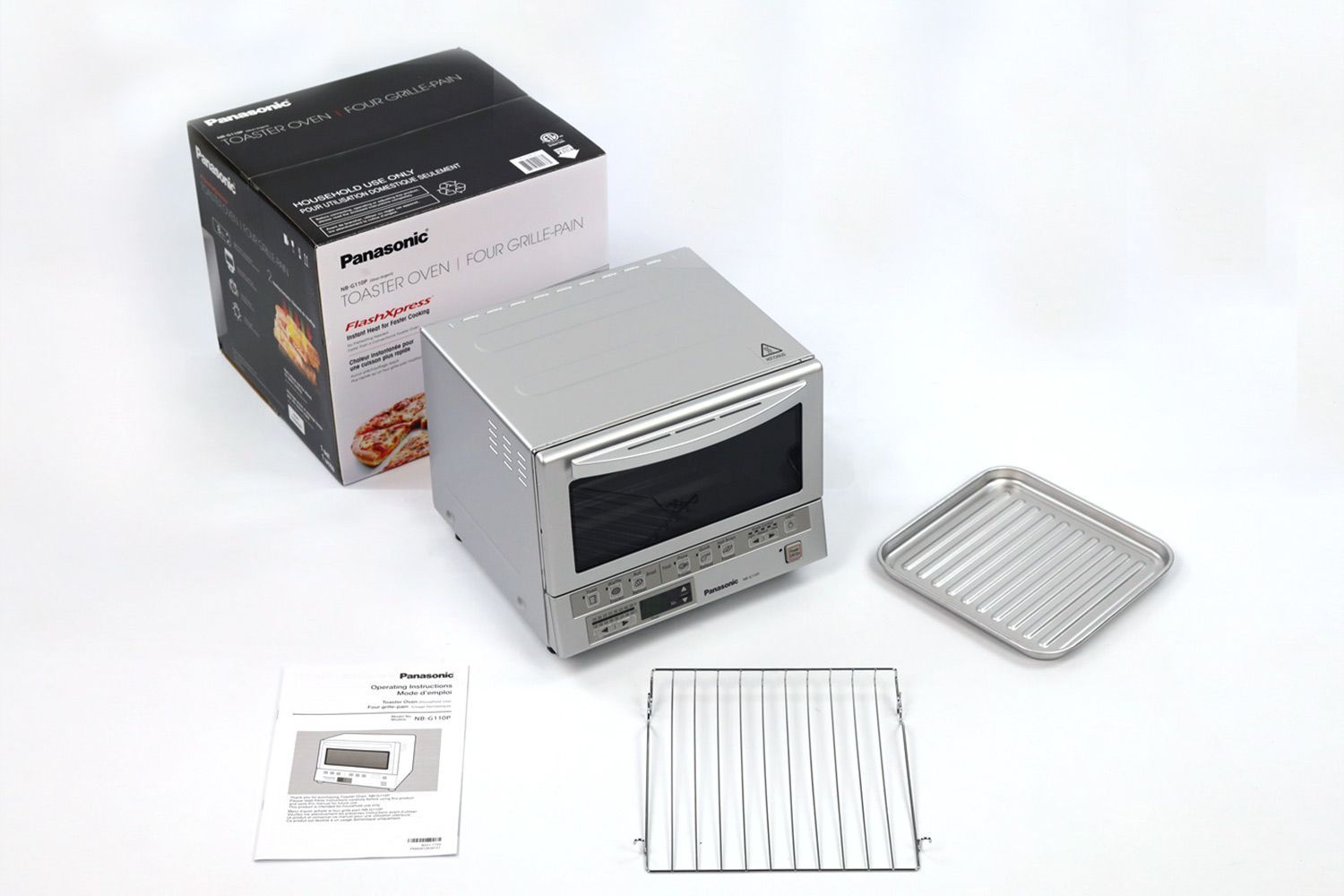
- Model: NB-G110P
- Warranty: 1 year (US, Puerto Rico, and Canada only)
- User Manual
- Baking Rack
- Baking Pan
The Panasonic NB-G110P was positioned firmly inside its box with four foam pads upon delivery. The baking rack and baking pan are wrapped in carton sheets and taped to the oven. Besides some basic information on the box, the oven also came with a user manual.
5.0 Exterior


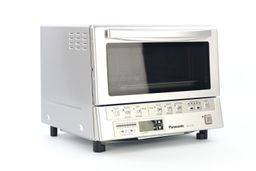
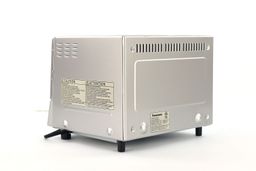


Our measurements of 12.6" x 11.81" x 10.24" were marginally different from the manufacturer’s 13" x 12" x 10.25". Despite its high price, the NB-G110P only has the basic exterior features of a small toaster oven which tallies to a score of 5/10.
The only thing standing out from the stainless steel casing is the slide-out crumb tray on the bottom to help with cleaning (+1). Keep in mind to push the crumb tray all the way in or there’ll be gaps.
The oven has two bumps on the back which act as back buffers but we think they could be longer (+2). The shape of the cool-touch door handle makes it easy to grab (+2).
Control Panel
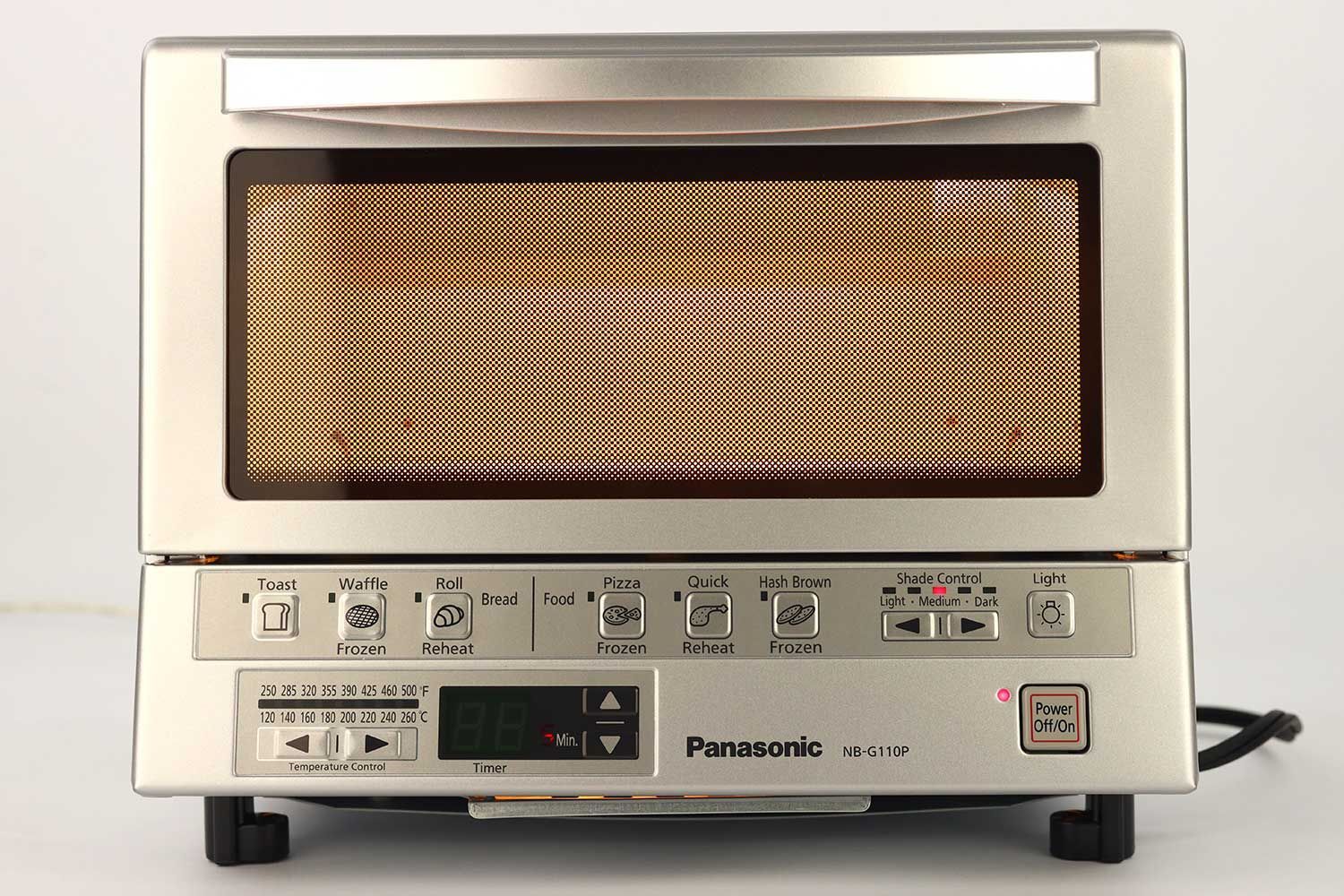
The Panasonic has an LCD and 14 control buttons in total. We have the standard buttons which are the power button, light toggle, two buttons to adjust the temperature, and two more to adjust the timer.
Then, we have six buttons for the six preset cooking functions and their two shade control buttons which are unique to this model. When you turn the oven on by pushing the power button, the indicator light will glow red.
Cooking Functions
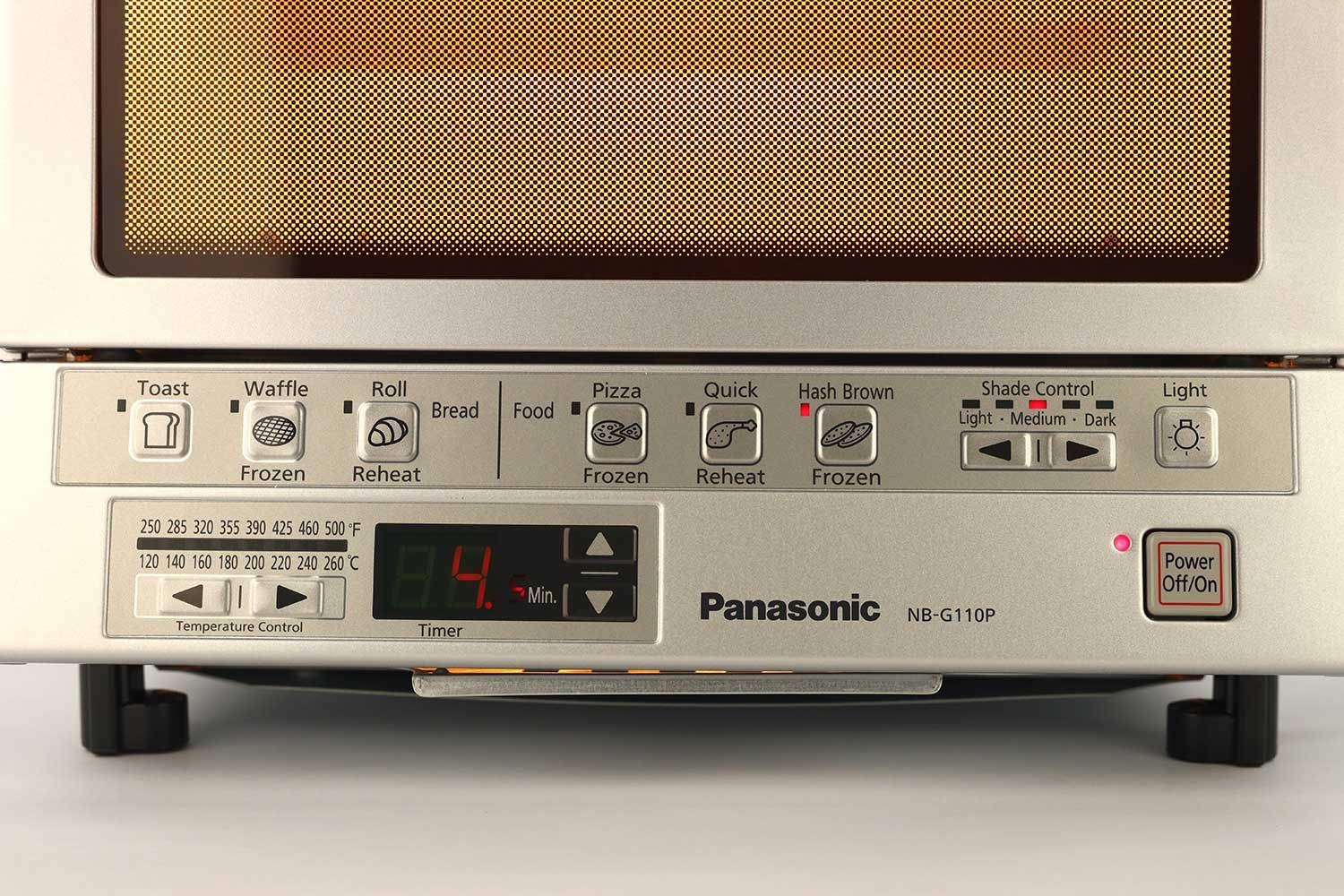
- Toast
- Frozen Waffle
- Reheat Rolls
- Frozen Pizza
- Quick Reheat
- Frozen Hash Brown
You can simply operate the oven by selecting a temperature and adjusting the timer which was what we did with our performance tests. Also, you can choose one of the six preset cooking functions including Toast, Frozen Waffle, Reheat Roll, Frozen Pizza, Quick Reheat, and Frozen Hash Brown.
The Shade Control includes five levels that are applicable to all the preset cooking functions. It’s quite common for Japanese models to have very specific cooking functions like these. How useful they are, however, is up to the user to decide.
5.0 Interior
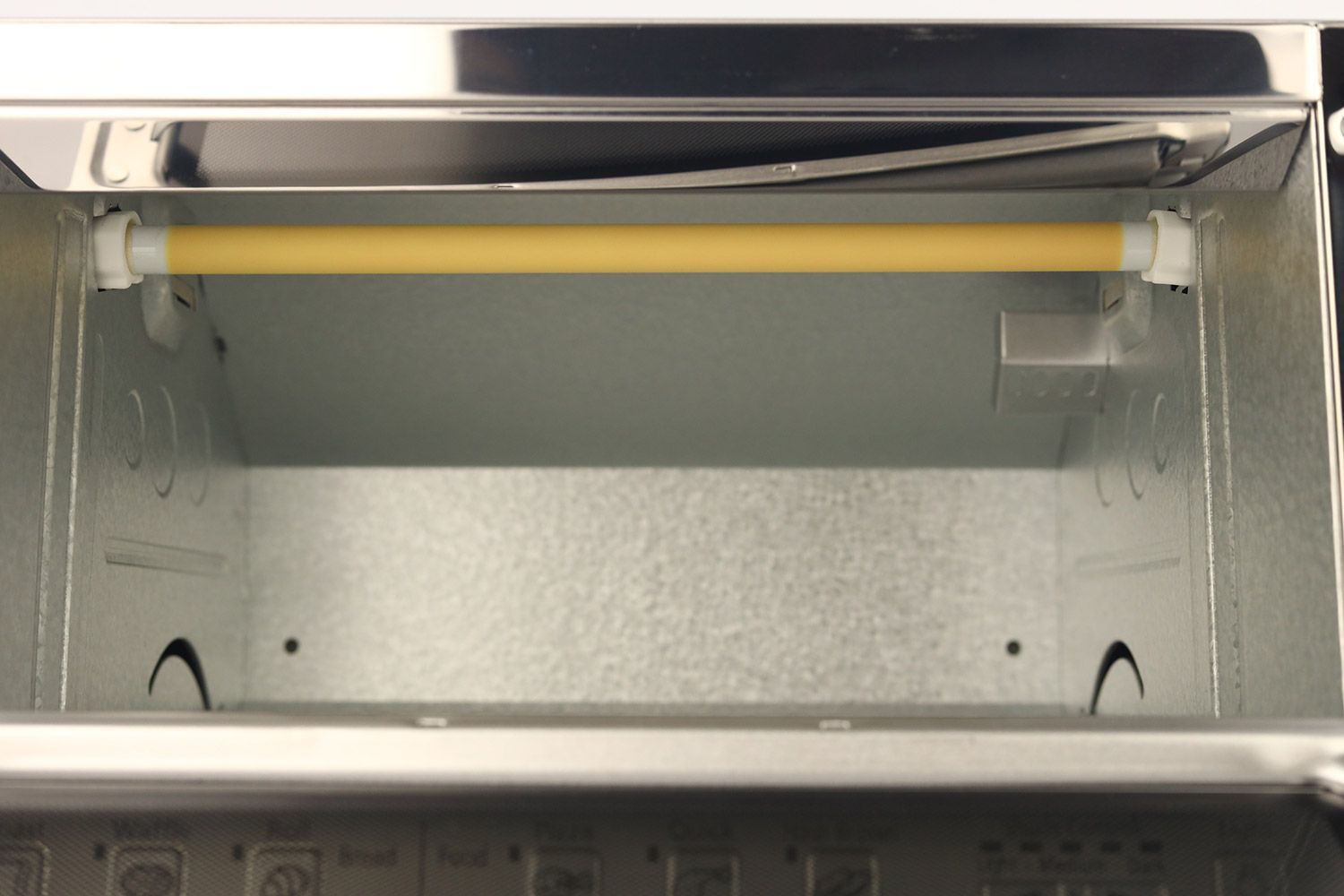

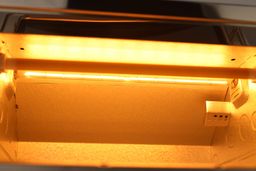
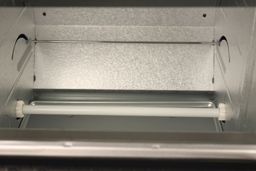
Despite having some uncommon interior features, the NB-G110P still suffers from common limitations of a small toaster oven. Its interior score ended up at 5/10.
The oven has two quartz and ceramic heating elements, one upper and one lower (+1). They use infrared light to cook which makes the process faster and more energy-efficient. Nonetheless, two heating elements may not distribute heat as evenly as four or more will do.
While not as durable, they cool down faster and are easier to clean. However, if grease splashes onto the heating elements while cooking, it’ll leave permanent stains.
The upper heating element is closer to the front of the cooking chamber while the interior light is closer to the back (+2). During cooking, the light automatically cycles on and off in sync with the heating elements which means you can manually turn it on but not off.
The oven has a mechanism to smoothly pull the rack halfway toward you as the door is opened (+1). However, this design choice meant that the cooking chamber only has one tray level instead of two which is more common in small toaster ovens (+1).
The cooking chamber has a coating for easy cleaning but it’s not 100% non-stick (+1). The oven doesn’t have a convection system to help with heat distribution, similar to many other small units (-1).
Capacity

We could fit 4 slices of toast, a 9-inch pizza but we could barely fit a 3 lb chicken inside the Panasonic. We measured the cooking chamber volume to be around 16.08 liters, slightly different from the manufacturer’s provided capacity of 15.52 liters.
Looking at our measurements of 11.2" x 9.84" x 9.05" compared to the manufacturer’s 10.2" x 9.8" x 4.1", we speculated they measured the height only from the baking rack to the upper heating element.
Power Cord

The power cord is 37.6 inches long, suitable for household use. However, the oven doesn’t have any storage space for it.
Accessories: Baking Rack

The baking rack has two hooks in the back to latch onto a horizontal rod in the middle of the cooking chamber and two hooks in the front to connect to the door. Opening the door will pull the baking rack and the baking pan on top of it halfway toward you to help keep your hands and fingers safe from the heat. Keep in mind that when the rack is removed, the door won’t be able to close tightly.
Accessories: Baking Pan

The baking pan fits nicely on top of the baking rack to prevent accidents. It has a grooved surface which can give your food attractive roasting marks and catch the dripping better. It also has a coating but it’s not completely non-stick so you may need to watch out for some stubborn stains after a heavy roasting session.
7.0 Build Quality
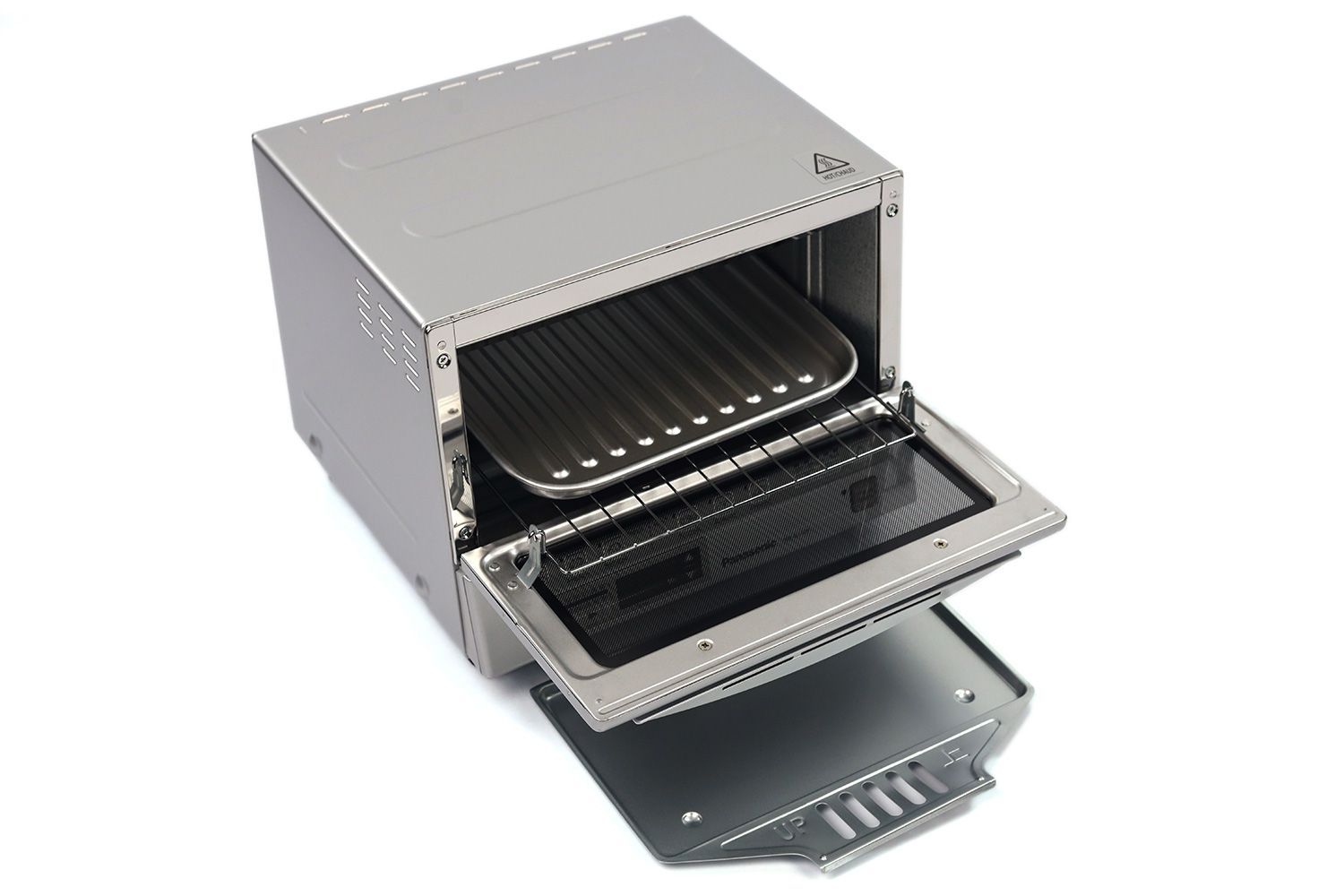
The price of the Panasonic is partially reflected in its build quality score of 7/10. A small footprint doesn’t stop the oven from having a sturdy construction (+2). Its casing is made from thick durable stainless steel so the oven only gets hot to the touch after a long cooking time at a high temperature (>400°F) (+2).
With the way the control panel is positioned, the NB-G110P has less length and more height than most toaster ovens of the same size category. The entire oven is shaped like a square which could be beneficial for some kitchen space (+2).
The LCD is black and glows red creating good color contrast and the analog buttons are responsive and can last a long time (+2). One thing to be nitpicky about is that you need to pay attention to push the crumb tray all the way in or else the oven won’t be tightly sealed (-1).
4.9 Usability: Lacking Premium Features
For what it’s worth, the Panasonic NB-G110P had respectable scores in terms of user control and cleanability. However, it lacks premium features of ease of use which can commonly be seen in units of this price range.
7.0 User Control
The control panel of the Panasonic wasn’t the easiest to use but it also didn’t cause any problem, so it earned a 7/10.
The current setting on the LCD is indicated by a red light which makes it easy to see (+2). Thanks to the light toggle, you can turn on the light even when the oven is not running (+2).
The preset cooking functions seem to be designed for worry-free cooking (+2). However, because they don’t allow for the adjustment of time and temperature, they weren’t applicable to our test.
Moreover, we couldn’t find the exact preset temperature and cooking time in the manual (-2). Thus, we simply chose to operate the oven by adjusting the temperature and timer on the control panel (+2).
The temperature is displayed in both °F and °C. It can be adjusted in increments of 35°F/20°C from 250°F to 500°F / from 120°C to 260°C, which is quite uncommon (+1). The timer can be adjusted in 0.5-minute increments below 10 minutes and 1-minute increments after 10 minutes (+1).
In addition to not having a stay-on feature, the timer only lasts from one to 25 minutes which is very short. It’s also worth noting that the timer is displayed in a 0.5-minute multiplier and not by the minute and second, unlike most other toaster ovens.
The cooking starts as soon as a timer adjustment key is pressed which makes it a bit tricky to get right. In addition, if you want to switch cooking functions, you’ll need to turn the oven off and on again (-1).
3.0 Ease of Use
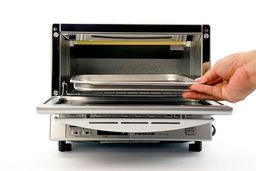
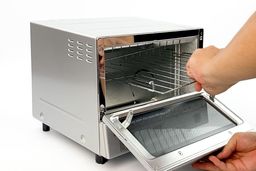
Despite having some features of convenience, the Panasonic didn’t quite meet our standards and scored a 3/10.
In addition to the cool-touch door handle (+2), the auto-pull rack minimizes the risk of burning due to contact (+2). The oven rack can be a little awkward to remove but it’ll be no problem with a bit of practice (+2). However, the auto-pull mechanism means that the oven door can only open or close all the way and not open partially to let food cool inside (-2).
The manufacturer claims that this oven has a smart sensor that turns the heat on and off automatically to maintain the perfect temperature and prevent burning. However, our tests showed no significant increase in terms of cooking performance compared to other small units.
It’s also advertised that this oven requires no preheating due to its efficiency. While we didn’t agree with this, we were able to confirm that the NB-G110P could reach a high internal temperature very quickly—4 minutes 50 seconds to reach 450°F.
The interior light makes it easier to make our way around the oven (+2). Keep in mind that opening the door doesn’t stop the oven or the interior light (-2). Be careful as the oven’s casing can get very hot after a long cooking time at a high temperature (-1).
When the cooking cycle finishes, the oven will beep once and then turn off. Nonetheless, we advise you to unplug the oven after use because, according to the manufacturer, the oven still consumes about 0.4 W when plugged in and not turned on.
6.5 Cleanability
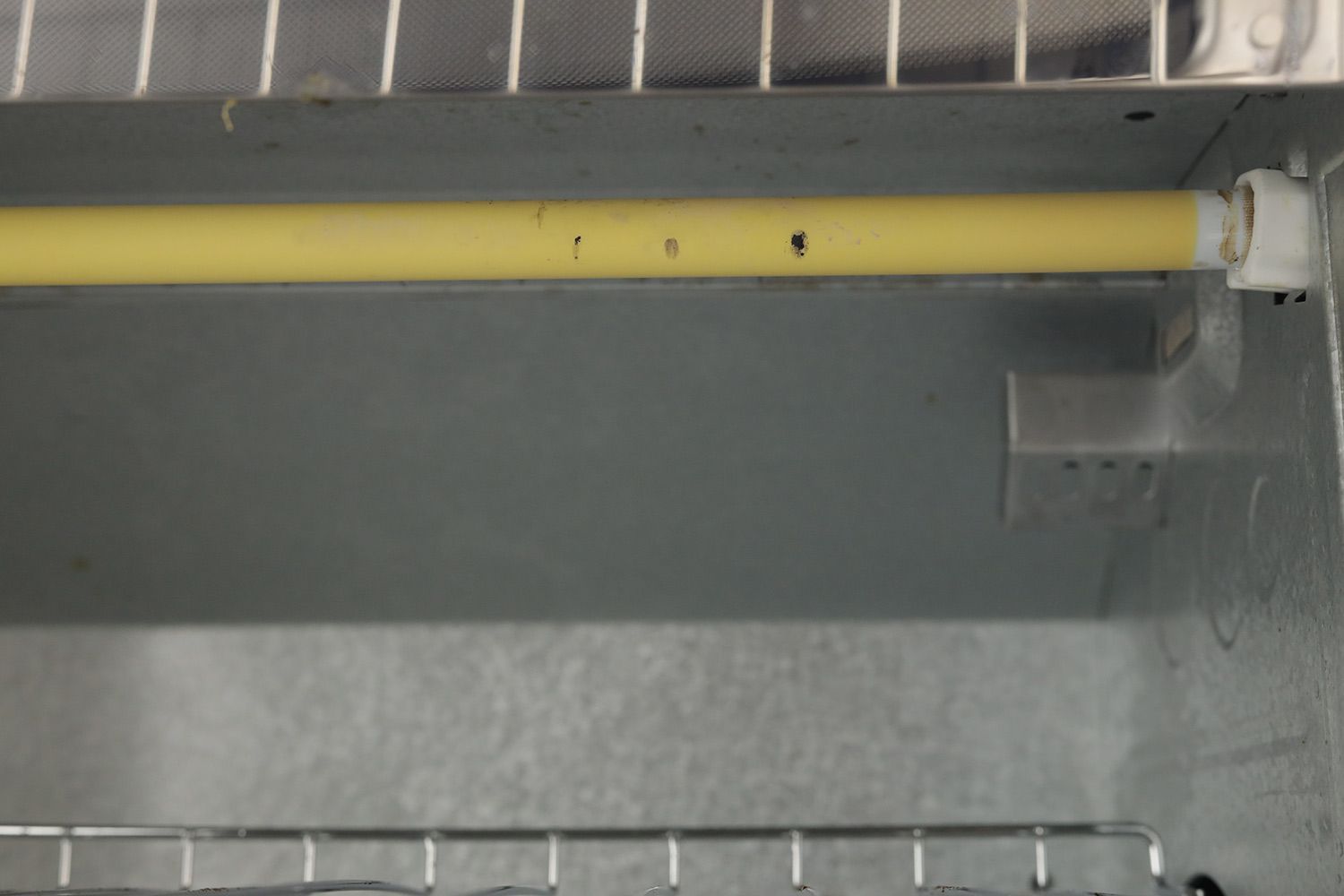
The Panasonic was quite easy to clean overall scoring a 6.5/10.
It has a stainless steel exterior and a non-stick interior (+4). The cooking chamber has no tricky nooks and crannies to make cleaning any more difficult than it needs to be (+2).
Thanks to the slide-out crumb tray, we could easily remove most of the falling debris after cooking. For the remaining crumbs on the cooking chamber’s floor, we could simply tilt the oven and get all of them out (+1).
Unfortunately, during our Whole Roasted Chicken test, the chicken grazed the upper heating elements when we put it in and left permanent black stains there (-1.5). The baking tray also suffered some stubborn stains but we were able to brush them off with a paste of baking soda and water (+1).